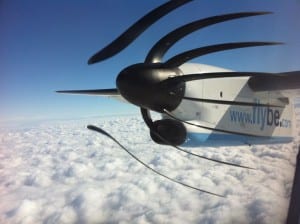Earlier this week I attended a workshop with Jon on how to film footage for 3D tracking, which would be one of my final shots for my showreel. Overall, there are many things to consider when filming for this specific purpose, the camera we used was a Sony A6300 which was connected to a black magic monitor which allowed us to capture raw footage, compared to if we had filmed on the camera alone which would have compressed our video, creating noise in the image, which would make it harder to track.
For the cameras settings we set it up as a high shutter speed to avoid blurring and as low an ISO as possible, to avoid noise in our footage. When filming, it tends to make it easier when you have objects or clear lines to use as tracking markers, for our first shot we filmed just outside of the MHT building, the floor there is consisted of large tiles, therefore making it a good tracking location.
One thing that Jon recommend that we look into was the effect of a rolling shutter, something I am slightly familiar with already, as you can plainly see the effects of a rolling shutter on very fast moving objects such as the propeller on an aeroplane.
An example of the effects of a rolling shutter
My next steps for camera tracking will be to attempt to track and composite the footage we filmed, once I can get hold of it later this week.

